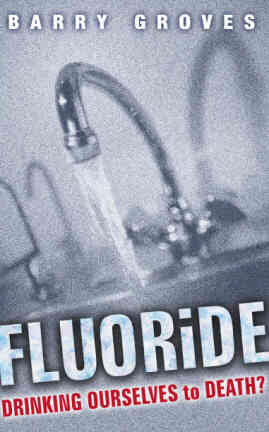BSE and Creutzfeldt-Jakob DiseaseThis is an article I wrote for The Oxford Times in December 1995. Although it's now getting old, it is still relevant as no further new evidence linking CJD in humans with BSE in cattle has been been produced since that time. With all the recent publicity, you might think that we have a high incidence of Creutzfeldt-Jakob disease (CJD) in Britain, and that this in turn is caused by the so called 'mad cow disease', BSE. Government tells us beef is safe but scientists bicker and we don't believe them. Confused and frightened, particularly for our children, we shun beef, one of our most valuable foods. Last week Oxfordshire County Council voted to stop buying beef for school meals. We cannot blame parents for their reaction in view of all the recent publicity. But these are decisions made solely on a gut reaction, without knowing the facts. The experts don't help. Professor Richard Lacey, the microbiologist who started the scare, said on television last week that he ruled out scrapie in sheep as a cause of BSE but that CJD must have come from BSE "because it had to come from somewhere and BSE was the only place it could have come from". This is not only quite illogical, it is also demonstrably untrue. He alluded to two recent cases of CJD in children, which were worrying, he said, because they were the first. No they weren't: there have been scores of cases from as young as 10 over several decades, all well documented in the medical journals. The fact is that CJD is an extremely rare disease with an average frequency in humans worldwide of less than one case per million per year.[1] It is one of seven similar diseases which affect many animal species and is endemic throughout the world. The first case of CJD was identified in the German Backer family way back in 1920;[2] the first case of BSE in cattle was not until 1985.[3] If eating cattle with BSE did cause CJD in humans, then we could expect more cases in countries with BSE than in those without it. And we could also expect more cases since the outbreak of BSE than before it. But neither is the case. As the table shows there are no more cases of CJD in Britain, which has by far the highest incidence of BSE, than in other European countries where there is none. The Netherlands, which has no BSE, has more deaths from CJD than we do.[4]
And CJD is not increasing. In 1984, the year before the first case of BSE in Britain, there were 42 deaths in England and Wales; in 1993 there were only 34.[5] Much is made of 4 cases of CJD in farmers who have had BSE in their herds, but this is a red herring: there have been six deaths in clerics.[6] And there are cases of CJD in lifelong vegetarians we aren't told about. The modern abattoir uses chainsaws to cut up animal carcases. These are cooled with jets of water which splash beef 'sawdust' all over the place. Yet there have been no deaths from CJD in abattoir workers, or in vets and others who have a much more intimate relationship with BSE infected tissue. About 15% of all cases of CJD are known to be hereditary, passed from one generation to the next.[7] All the rest of the cases appear to be caused by doctors. From all over world come reports of CJD in people, including children, given human growth hormone [8] and other human tissue – sex hormones, corneal transplants, dura mater grafts.[9] There is no suggestion that a single case of CJD has been acquired from either eating or working with a BSE infected animal.[10] Further evidence that BSE cannot be passed to humans was demonstrated using mice with implanted human tissue. While BSE did transfer to those without it, it did not to those with it. Sheep have suffered a similar disease, scrapie, for over 200 years, with no evidence that it transferred to humans. Nevertheless, to minimise any risk, in 1989 the government banned the use of cows' brains or spinal cord, the only parts of the animal which contain the BSE agent, from use in any food product. In 1993 the World Health Organisation concluded that the BSE epidemic in Britain was over and that UK policies were sufficient to minimize the risk of exposure to BSE of all species, including humans.[11] The BSE scare should have been over. To sum up: These diseases are only passed genetically within families or by feeding or transplanting infected material within the same species: BSE passes from cow to cow; CJD from human to human. There is no evidence that the one causes the other. The time to give up eating something is when there is the greatest risk. If there ever was any risk in eating beef, that time was a decade ago. And as there is actually no evidence that anyone was at risk then, it makes no sense to give up eating beef now. References:
1. Mocsny N.
Precautions prevent spread of Creutzfeldt‑Jakob disease. J Neurosci
Nurs. 1991; 23(2): 116‑9
|
|
|

Custom Search
|
TRANSLATE . . . |
|
|
|
 When doctors won't tell . . .
BARRY'S BOOKS"A great book that shatters so many of the nutritional fantasies and fads of the last twenty years. Read it and prolong your life." "NH&WL may be the best non-technical book on diet ever written" - a completely new kind of video and DVD. "Must be regarded as essential reading . . . informative and thought-provoking." Dr Vyvyan Howard, MB. ChB. PhD. FRCPath. University of Liverpool. |
 DietSpotlight.com
DietSpotlight.com


